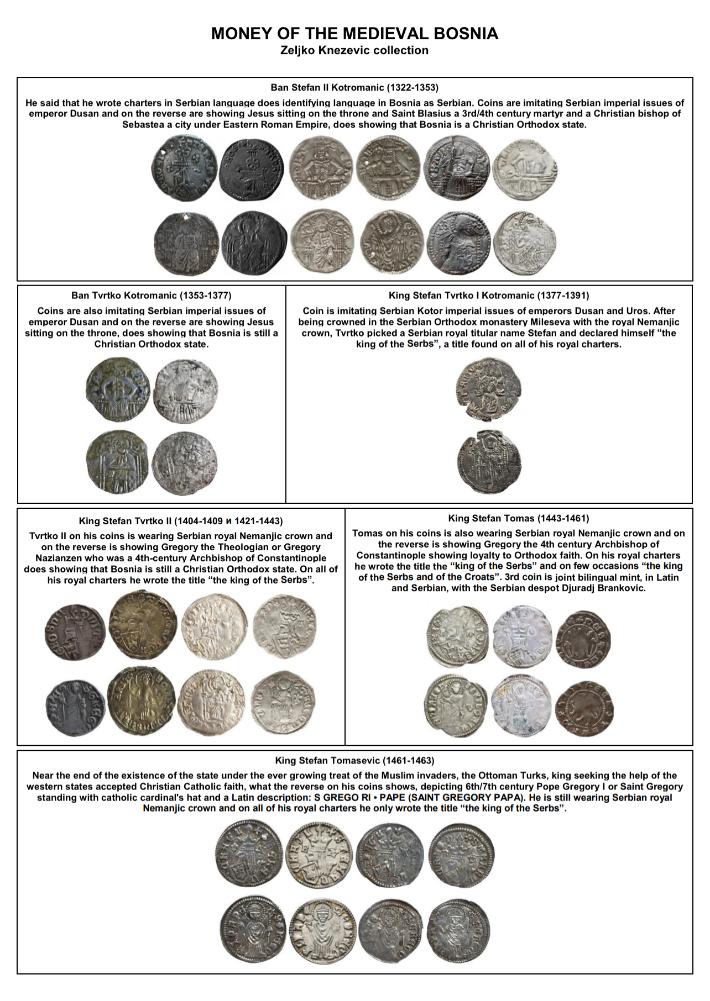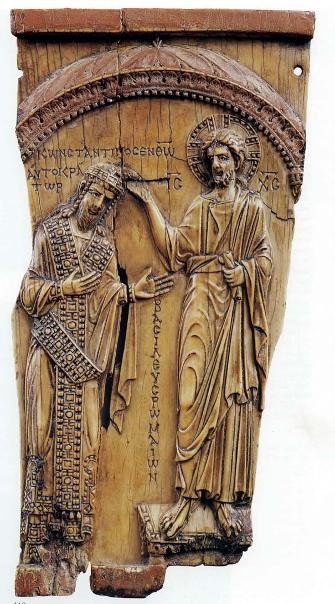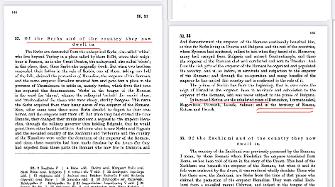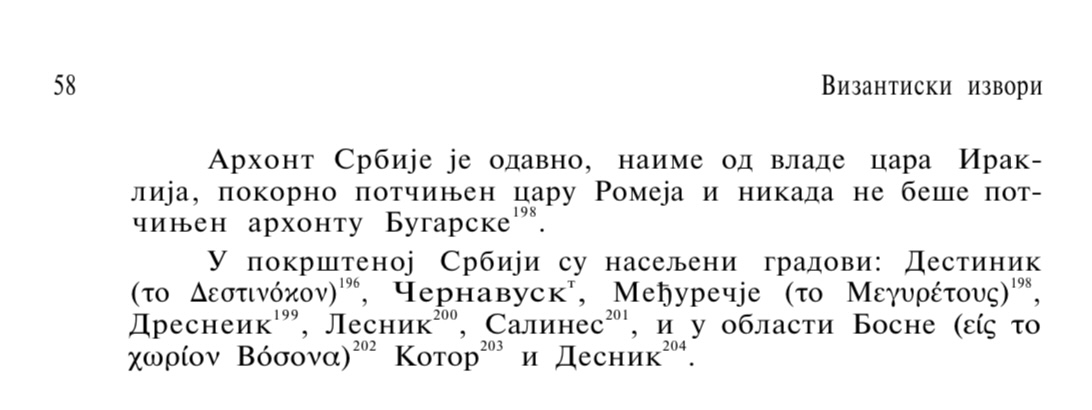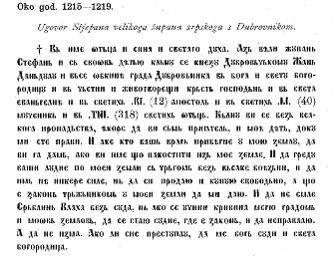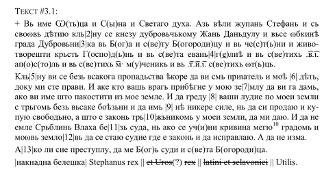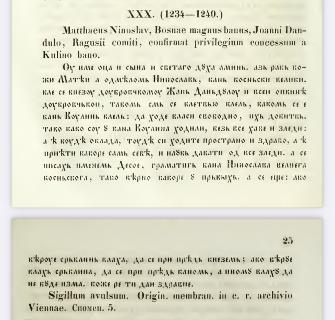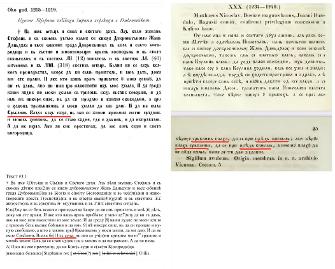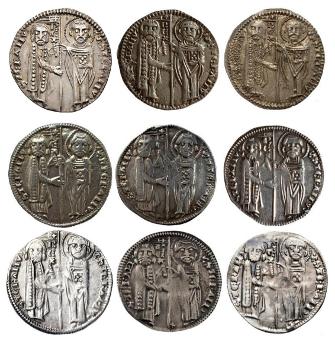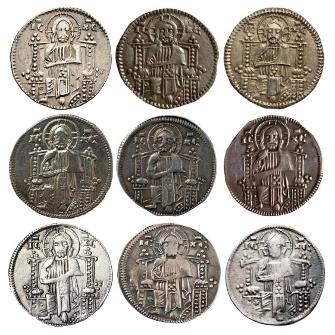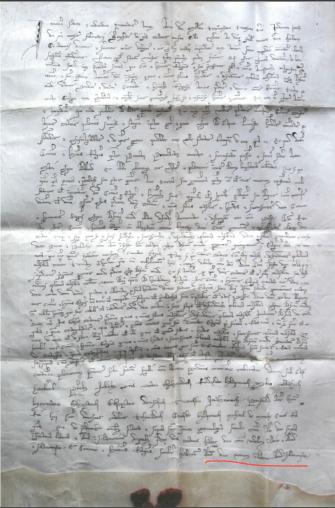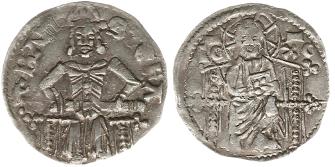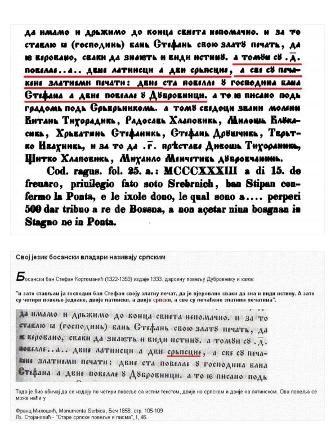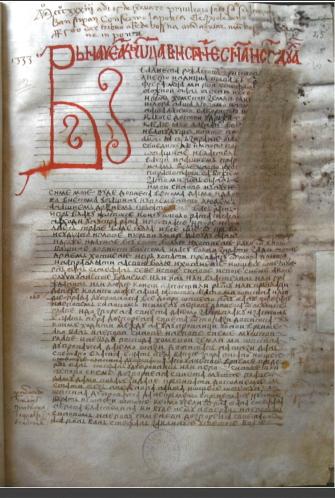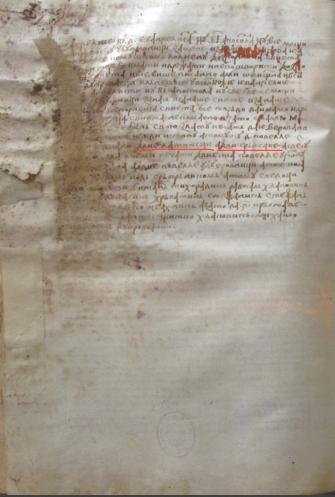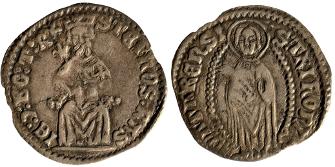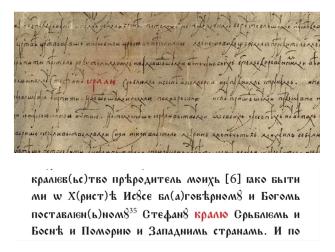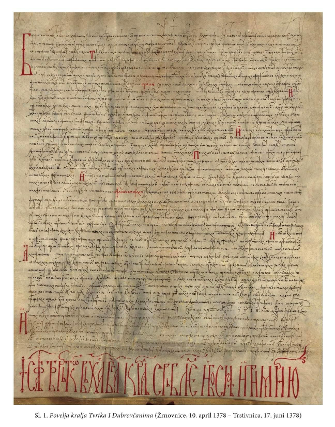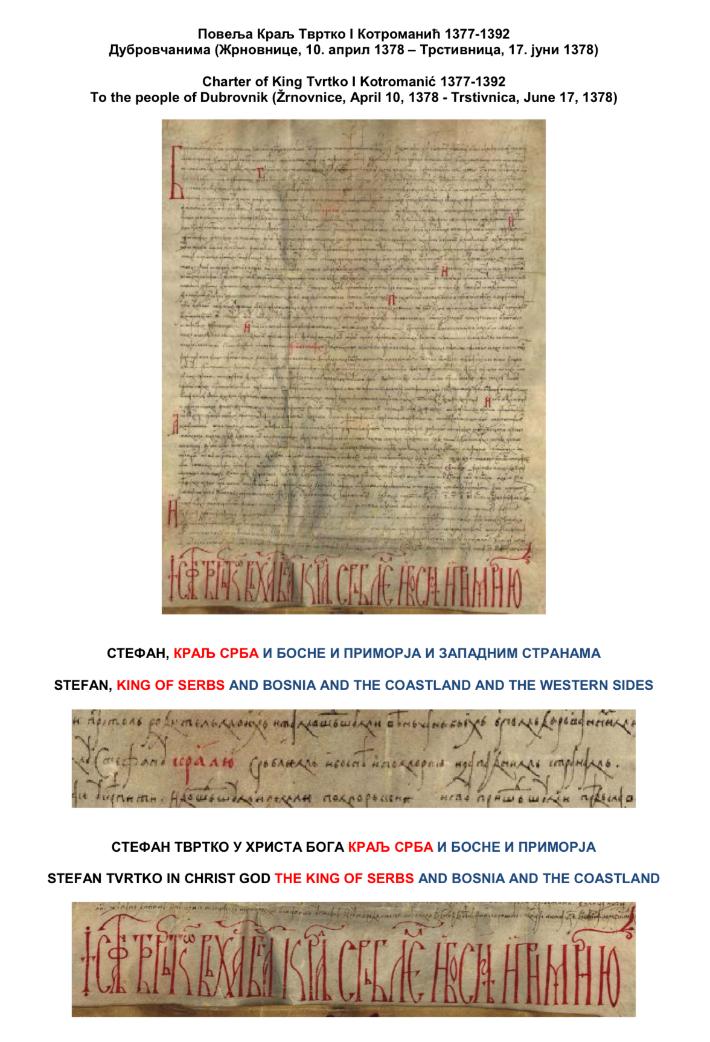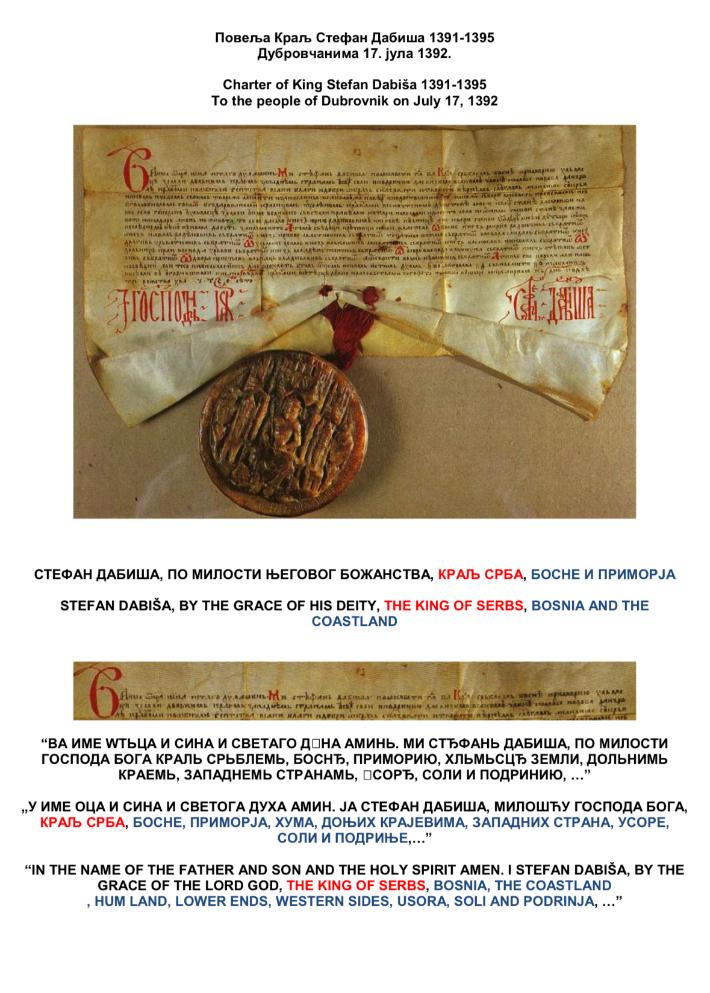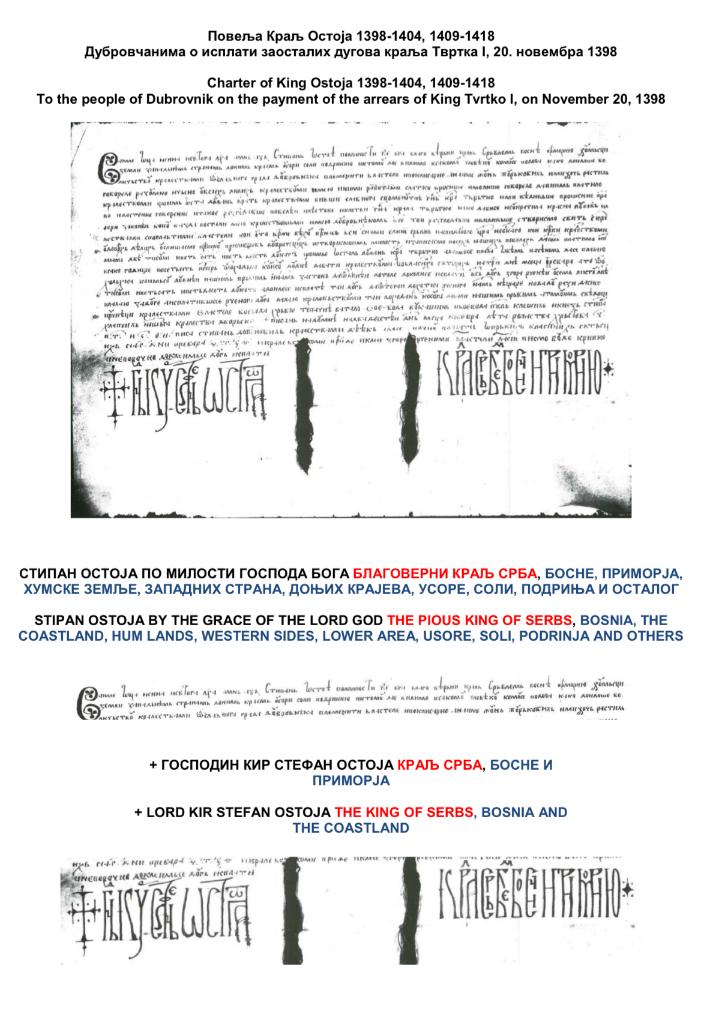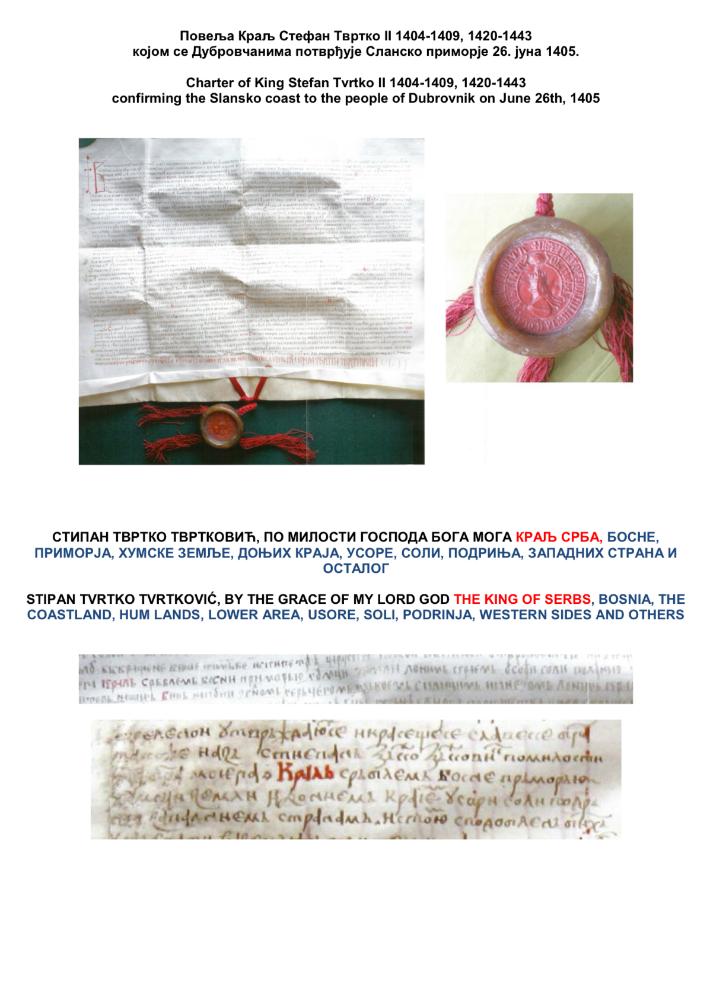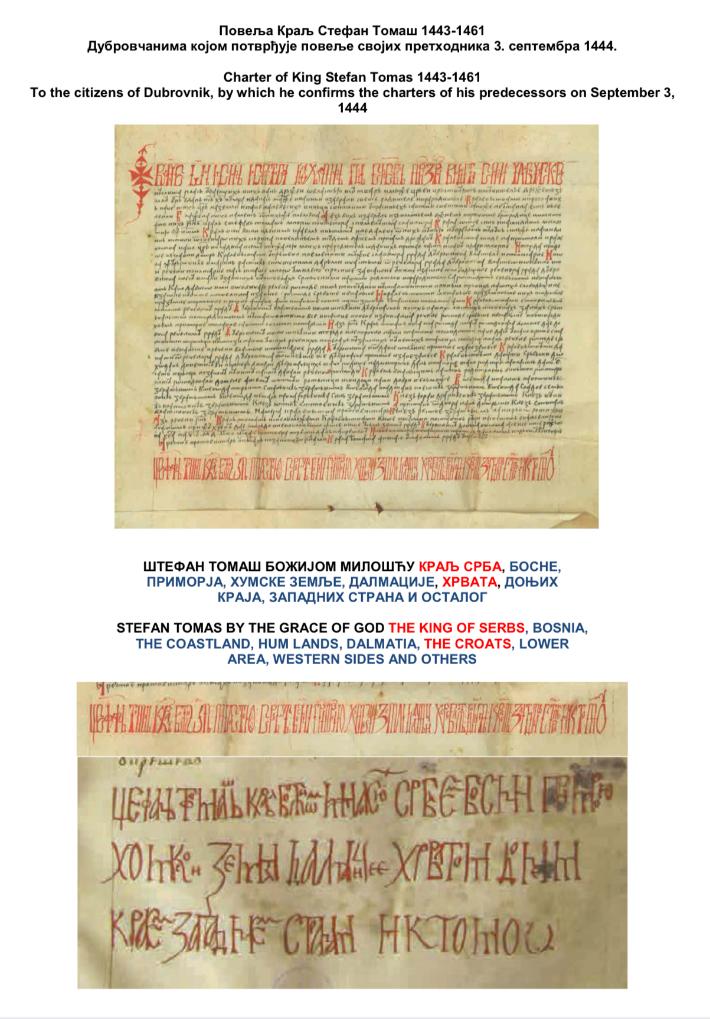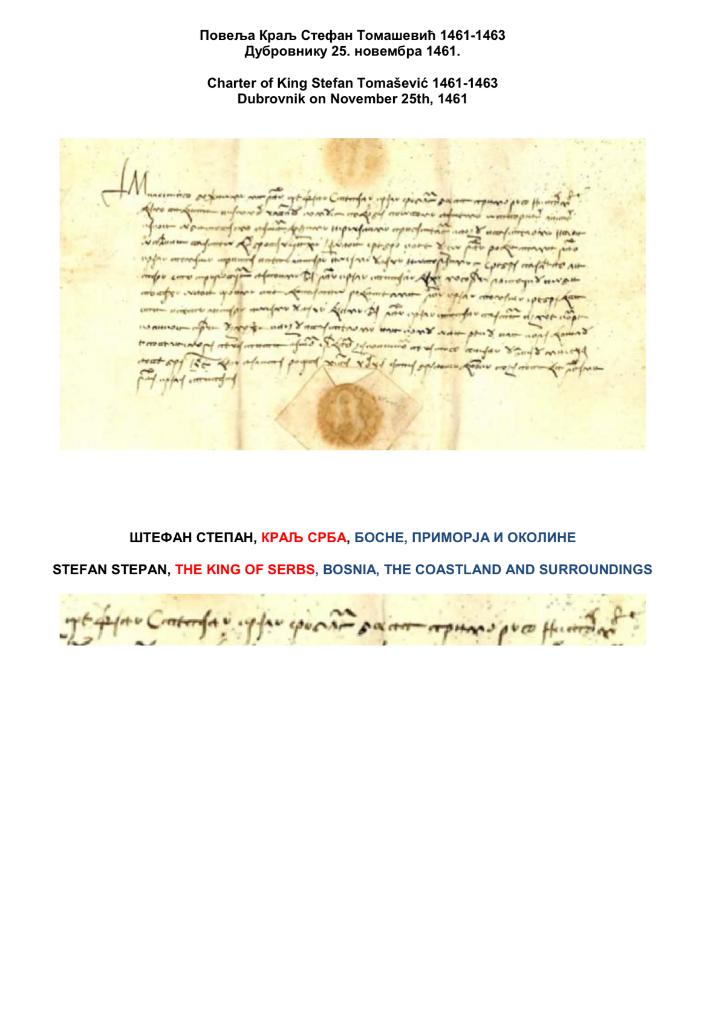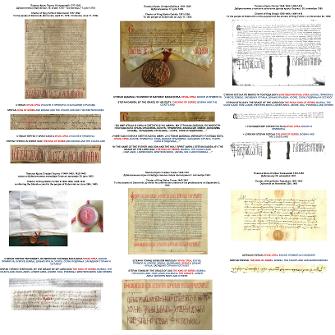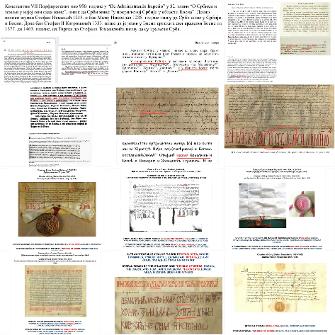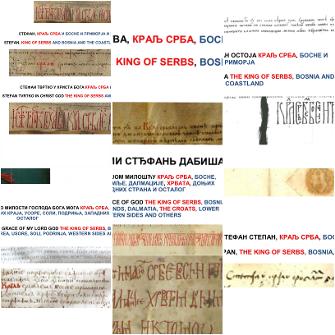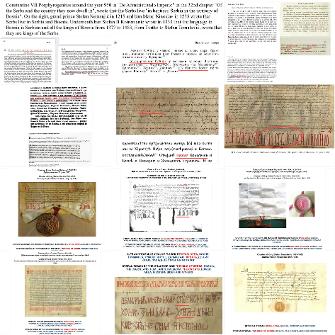FOUR UNDISPUTED LINES OF EVIDENCE THAT THE INHABITANTS OF MEDIEVAL BOSNIA WERE SERBS AND THAT THE LANGUAGE WAS SERBIAN!
There are four irrefutable proofs that there is no other people in Bosnia than the Serbs and that the language was never Croatian or Bosnian, nor that any script called "Bosančica" ever existed, but that it was always the Serbian language and the Serbian Cyrillic alphabet.
The evidence is:
- “De Administrando Imperio” known as "Writings about Nations" of the Byzantine Emperor Constantine VII Porphyrogenitus (913-959), who confirmed that in the 10th century only Serbs live in Bosnia.
- The charters of grand prince of Raška Stefan Nemanjić (1196-1217, king Stefan The First Crowned 1217-1228) and ban Matej Ninoslav (1234-1250) of Bosnia, who confirmed that in the 13th century only Serbs live in both states.
- The "Charter of Ston" of the ban of Bosnia Stefan II Kotromanić 1322-1353, who confirmed that the language in Bosnia is Serbian.
- The charter of King of Bosnia Stefan Tvrtko I Kotromanić 1377-1391 (full title: "King of the Serbs and Bosnia and the Coastland and the Western Lands") who confirmed that the people of the Kingdom of Bosnia in the 14th century are only Serbs as he was their king.
"WRITINGS ON THE NATIONS" OF THE BYZANTINE EMPEROR CONSTANTINE VII PORPHYROGENITES (913-959)
Byzantine emperor Constantine VII Porphyrogenitus (913-959) in the 10th century in his book "Writings about Nations" writes at the end of the 32nd chapter entitled "OF THE SERBS AND OF THE COUNTRY THEY NOW DWELL IN" on page 161 in the English translation:
“The prince of Serbia has from the beginning, that is, ever since the reign of Heraclius the emperor, been in servitude and submission to the emperor of the Romans, and was never subject to the prince of Bulgaria.
In baptised Serbia are the inhabited cities of Destinikon, Tzernabouskei, Megyretous, Dresneik, Lesnik, Salines; and in the territory of Bosona, Katera and Desnik.”
And on page 58 in the Serbian translation:
„Архонт Србије je одавно, наиме од владе цара Ираклија, покорно потчињен цару Ромеја и никада не беше потчињен архонту Бугарске.
У покрштеној Србији су насељени градови: Дестиник (το Δεοτινοχον), Чернавуск, Meђуречје (το Mεγνρετονζ), Дреснеик, Лесник, Салинес, и у области Босне (είζ το χωριού Βοσονα) Котор и Десник.”
"Since the reign of Heraclius the emperor" means from his reign 610-641 "In baptised Serbia are the inhabited cities"... "and in the territory of Bosona"... Bosona or Bosnia is mentioned here for the first time as the territory of baptised Serbia where Serbs live, two cities in the area of Bosnia are mentioned together with six other cities, a total of eight cities of baptised Serbia, at the end of the chapter entitled "OF THE SERBS AND OF THE COUNTRY THEY NOW DWELL IN". Bosnia is a Serbian region, part of a Serbian country! Even the towns of Destinik and Dresneik sound very similar to the town of Desnik in the Bosnia region! Apparently the same people named these places.
Writings of Porphyrogenitus in English:
Writings of Porphyrogenitus in Serbian:
THE CHARTERS OF GRAND PRINCE OF RAŠKA STEFAN NEMANJIĆ (1196-1217, SERBIAN KING STEFAN THE FIRST CROWNED 1217-1228) AND BAN MATEJ NINOSLAV (1234-1250) OF BOSNIA
The two charters are from the first half of the 13th century.
Serbian Grand Prince Stefan Nemanjić (1196-1217), son of Stefan Nemanja, before becoming king Stefan the First Crowned (1217-1228), around 1215-1217, writes a charter to Duke of Dubrovnik Jean (John) Dandolo and the city of Dubrovnik.
Published in Diplomatic Collection III, page 140, number 123 (dated there: 1215–1219) and in Nebojša Porčić book "Documents of Serbian Medieval Rulers from the Dubrovnik Collection Nemanjić Period", Belgrade 2017, page 134:
The Charter reads in its entirety:
"IN THE NAME OF THE FATHER, THE SON AND THE HOLY SPIRIT. I, THE GRAND PRINCE STEFAN WITH MY CHILDREN, SWEAR TO DUBROVNIK PRINCE JEAN DANDOLO AND ALL THE INHABITANTS OF THE CITY OF DUBROVNIK BY GOD AND THE HOLY MOTHER OF GOD AND THE HONORABLE LIFE-GIVING CROSS OF THE LORD AND THE HOLY GOSPEL AND ALL THE HOLY APOSTLES AND ALL THE HOLY MARTYRS AND ALL THE HOLY FATHERS. I SWEAR TO YOU WITHOUT ANY DOUBT THAT I AM YOUR FRIEND AND MY CHILDREN AS LONG AS YOU ARE FAITHFUL. AND IF SOMEONE OF YOURS COMES TO MY COUNTRY, I WILL GIVE YOU, IF SOMEONE FROM MY COUNTRY DOES TROUBLE TO YOU. AND THAT YOUR PEOPLE GO THROUGH MY COUNTRY TO TRADE WITHOUT ANY FEAR AND THAT NO ONE HARM THEM AND TO SELL AND BUY FREELY, ACCORDING TO THE TRADE LAW OF MY COUNTRY, TO GIVE ME. AND VLACH NOT TO PUNISH SERBIAN WITHOUT A TRIAL, AND IF A GUILT APPEARS AMONG THE CITIZENS OF MY COUNTRY, THAT THE JUDGES MEET WHERE THE LAW IS AND TO BE CORRECTED. IF I WRONG IN THIS, MAY GOD JUDGE ME AND THE HOLY MOTHER OF GOD."
About 20 years later, the Bosnian ban Matej Ninoslav (1234-1250), around 1234-1235, writes a charter to the same prince and city, Jean Dandolo and the city of Dubrovnik.
Published in the book "Monumenta Serbica spectantia historiam Serbiae Bosnae Ragusii" ("Serbian monuments related to the history of Serbia, Bosnia and Ragusa"), F. Miklošić in Vienna in 1858, page 25:
The Charter reads in its entirety:
"IN THE NAME OF THE FATHER AND THE SON AND THE HOLY SPIRIT AMEN, I SERVANT OF GOD MATTHEW AND SINCE CHILDHOOD NINOSLAV, THE GREAT BAN OF BOSNIA. I SWEAR TO THE PRINCE OF DUBROVNIK JEAN DANDOLO AND TO ALL THE MUNICIPALITIES OF DUBROVNIK, THIS IS HOW WE SWEAR WITH A CURSE, AS BAN KULIN SWORN TOO: TO WALK FREELY, AND THEIR PROFITS. JUST AS THEY WALKED WITH BAN KULIN, WITHOUT DAMAGE OR INJURY: AND WHEREVER THEY WERE GOING, THEY WERE GOING SPACIOUSLY AND HEALTHY, APPROACHING AS THEMSELVES, AND GIVING TEACHINGS WITHOUT INJURY. AND I WROTE EVERYTHING UNDER THE NAME OF DESOE, THE CLERK OF BAN NINOSLAV OF THE GREAT BOSNIA, AS FAITHFULLY AS IT IS WITH THE REAL ONES. AND IF THE SERBIAN BELIEVES VLACH, HE SHOULD GO BEFORE THE PRINCE; IF VLACH BELIEVES THE SERBIAN, HE SHOULD GO BEFORE BAN, AND THAT VLACH NOT TO TAKE. GOD GIVE HEALTH."
Ban Matej Ninoslav never says that there are some "Bosniaks" living in Bosnia, nor how they should behave or how their disputes should be resolved with Dubrovnik merchants! Ban Matej Ninoslav in Bosnia, as well as the grand prince Stefan Nemanjić and later the king of all Serbian lands, Stefan The First Crowned in Raška, exclusively mention Serbs in their country and Vlachs as foreign merchants from Dubrovnik.
The people in the principality and later from 1217 the kingdom and from 1346 the empire of Raška as well as the people in the banovina and from 1377 the kingdom of Bosnia are exclusively Serbs!!!
The charter of Serbian Grand Prince Stefan Nemanjić (1196-1217) published in Diplomatic Collection III page 140 number 123 (dated 1215–1219).
The charter of Serbian Grand Prince Stefan Nemanjić (1196-1217) published in Nebojša Porčić book Documents of Serbian Medieval Rulers from the Dubrovnik Collection Nemanjić Period Belgrade 2017 page 134.
The charter of Bosnian ban Matej Ninoslav (1234-1250) published in the book Monumenta Serbica spectantia historiam Serbiae Bosnae Ragusii F Miklošić in Vienna in 1858 page 25.
This is indisputable and irrefutable proof that only Serbs live in Bosnia while Vlachs live in Dubrovnik!
Coins of Serbian king Stefan the First Crowned (1217-1228) obverse.
Coins of Serbian king Stefan the First Crowned (1217-1228) reverse.
"THE STON CHARTER" OF BAN STEFAN II KOTROMANIĆ (1322-1353)
The Ston charter of Ban Stefan II Kotromanić from 1333, written in the Serbian language and in the Serbian Cyrillic alphabet, begins with the words: "LORD STEFAN, BY THE GRACE OF GOD, BAN OF BOSNIA AND USORA AND SOLI AND MASTER OF THE HUM LAND..."
The charter was issued "UNDER THE CITY OF SREBRENIK", in four copies, as specified in the text of the charter itself (underlined in red) "TWO ARE IN LATIN, AND TWO ARE IN SERBIAN, AND ALL ARE SEALED WITH A GOLDEN SEAL: THE TWO CHARTER REMAIN WITH LORD BAN STEFAN, AND TWO CHARTER IN DUBROVNIK", one in Serbian and one in Latin (Franc Miklošić, Monumenta Serbica, Vienna 1858, pages 105-109).
In what language did the Bosnian rulers issue charters to Dubrovnik? Bosnian or Croatian? What is the language of the banovina of Bosnia? This charter clearly shows that the language of Bosnia is the Serbian language! There is no other language. The Latin language is used in the city of Dubrovnik and the Serbian language in Bosnia!
The Ston Charter of ban Stefan II Kotromanić from 1333. original in Latin, first page with the words two are in Latin and two are in Serbian underlined with a red line.
The image of Bosnian Ban Stefan II Kotromanić (1322-1353) on his silver coin wearing a round crown.
The Ston Charter of Ban Stefan II Kotromanić from 1333, published in the book Monumenta Serbica, Franz Miklošić, Vienna 1858, pages 105-109.
The Ston Charter of Ban Stefan II Kotromanić from 1333, the original in the Serbian language, first page.
The Ston Charter of Ban Stefan II Kotromanić from 1333, original in Serbian, second page, with the words two are in Latin and two are in Serbian underlined with a red line.
CHARTER OF KING STEFAN TVRTKO I KOTROMANIĆ (1377-1391)
On October 26th, 1377, Tvrtko was crowned king with the Serbian crown of the Nemanjić royal family in the Serbian Orthodox monastery in Milesevo, on which occasion he took the Serbian titular name Stefan, which was borne by all Serbian rulers.
The following year, in 1378, King Tvrtko I wrote a charter to Dubrovnik in the Serbian language and in Serbian Cyrillic alphabet. In it, he calls Orthodox Christianity the "TRUE FAITH" and Jesus Christ the "BENEFICIARY RULER" who gave power and reason to people to rule and create judgment and reason on earth. He mentions "SERBIAN LAND" and "THE THRONE OF SERBIAN LAND" which he inherited. He never mentioned anywhere the throne of Bosnian land because it does not exist. It mentions "SERBIAN INCOME". Nowhere did he ever mention the Bosnian income because this was the income that the people of Dubrovnik paid exclusively to the Serbian state and Serbian rulers.
At the end of the charter, Tvrtko signs as “KING OF THE SERBS” and does not mention any other nation. If the so-called "Bosnian Church" had existed, it would certainly not have given the Tvrtko the title of King of the Serbs, but probably "King of the Bosniaks", if they had existed as a people.
There is also the question of the crown. If the so-called "Bosnian Church" existed and was heretical as claimed, would the Pope from Rome or the Patriarch from Constantinople give them a crown? Certainly not! The Serbian royal crown of Nemanjić was available because it had not been in use since Dušan was crowned emperor on April 16th, 1346. Vukašin Mrnjavčević, who became Serbian king in 1365, did not receive the Nemanjić crown because he was not from the Nemanjić lineage. He is depicted on the frescoes with a round closed crown and not the forked open crown of Nemanjić!
In 1377, Tvrtko received the crown of Nemanjić from Prince Lazar and the Serbian Orthodox Church because, as a descendant of Nemanjić, he had a legal right to the Serbian crown and the Serbian throne. Tvrtko is depicted with a forked open crown on his coins minted in Kotor.
He firmly says: "... I WENT TO THE SERBIAN LAND, WANTING AND DESIRING TO STRENGTHEN THE THRONE OF MY PARENTS. AND GOING THERE, I WAS CROWNED BY GOD..." "CROWNED... WITH THE CROWN... OF MY GRANDPARENTS".
Tvrtko was crowned in the Serbian Orthodox monastery of Mileseva according to the customs of the Serbian Orthodox Church next to the grave of Saint Sava, the founder of the Serbian Orthodox Church, autocephalous since 1219. Only as an Orthodox Christian could he be crowned in a Serbian Orthodox monastery.
The image of the Bosnian king Stefan Tvrtko I Kotromanić (1377-1391) on his silver coin minted in Kotor with the forked open crown of the SerbianNemanjić royal family.
The place in the charter where the word KING is painted in red, where it says ... TO BE PEOPLE IN CHRIST JESUS AND BY GOD APPOINTED STEFAN, KING OF THE SERBS AND BOSNIA AND THE COASTLAND AND THE WESTERN COUNTRIES.
The charter of King Stefan Tvrtko I Kotromanić (1377-1391), original from 1378 with the signature in large red letters STEFAN TVRTKO IN CHRIST GOD KING OF THE SERBS AND THE BOSNIA AND THE COASTLAND.
To summarize:
Around the year 950, the Byzantine emperor Constantine VII Porphyrogenitus first mentioned the territory of Bosnia as a territory that is part of baptised Serbia in the 32nd chapter of his "Writings about Nations" under the title "OF THE SERBS AND OF THE COUNTRY THEY NOW DWELL IN". If the Serbs did not live in Bosnia, Porphyrogenitus would not have mentioned Bosnia in the 32nd chapter in which he exclusively writes about the Serbs! According to him, Serbs live in Bosnia from the time of the reign of emperor Heraclius (610-641), from after 610 until the reign of Porphyrogenitus (913-959) and his writings for his son about the state of the empire and the people living in it, around 948-952, so for around 340 years.
Around 265 years later, the grand prince Stefan Nemanjić (1196-1217, king 1217-1228) from the Principality of Raška and 20 years after him ban Matej Ninoslav (1232-1250) from the Banovina of Bosnia both wrote to the same duke of Dubrovnik, Jean Dandolo (1209-1235), one at the beginning and the other towards the end of his rule over the city of Dubrovnik, and both stated that their people are Serbs.
Around 100 years later, Ban Stefan II Kotromanić writes a charter in 1333 in which he identifies the language of Bosnia as Serbian which proves that the population did not change even around 380 years after the reign of Emperor Porphyrogenitus or around 720 years after the reign of the emperor Heraclius!
45 years later, King Stefan Tvrtko I Kotromanić writes a charter in 1378 in which he mentions the Nemanjić Serbian ruling dynasty as his parents, the Serbian throne as the throne of his grandparents, confirms that he received "Serbian income" that the people of Dubrovnik exclusively paid to Serbian rulers and signs the charter as king of the Serbs. He does not mention any other people!
All the kings of Bosnia from 1377 to 1463, when Bosnia fell under Ottoman occupation, always said that they were kings of the Serbs! The only other nation mentioned for the first time as living in Bosnia was during the reign of King Tomas, who in a charter from 1444 states that he is the king of Serbs and Croats. His son King Stefan Tomašević 1461-1463 does not mention that Croats live in Bosnia.
This proves without any doubt that from around 610 to 1463, when the Kingdom of Bosnia fell and the Ottoman occupation took place, only Serbs lived in Bosnia for the full 853 years!!!
From the formation of the Kingdom of Bosnia in 1377 to the fall of the state and the Ottoman occupation in 1463, in those 86 years of existence, all the kings of Bosnia from the first to the last wrote that they were kings of the Serbs!
Here are 6 examples:
1.
Charter of King Tvrtko I Kotromanić (1377-1392), to the people of Dubrovnik (Žrnovnice, April 10, 1378 - Trstivnica, June 17, 1378).
In the text in the 7th line it reads: “… STEFAN, KING OF SERBS AND BOSNIA AND THE COASTLAND AND THE WESTERN SIDES…” and in the signature on the bottom of the charter it reads: “STEFAN TVRTKO IN CHRIST GOD THE KING OF SERBS AND BOSNIA AND THE COASTLAND”.
2.
Charter of King Stefan Dabiša (1391-1395), to the people of Dubrovnik on July 17, 1392.
Charter begins with the words: “IN THE NAME OF THE FATHER AND SON AND THE HOLY SPIRIT AMEN. I STEFAN DABIŠA, BY THE
GRACE OF THE LORD GOD, THE KING OF SERBS, BOSNIA, THE COASTLAND, HUM LAND, LOWER ENDS, WESTERN SIDES, USORA, SOLI AND PODRINJA, …” and on the seal it reads: STEFAN DABIŠA, BY THE GRACE OF HIS DEITY, THE KING OF SERBS, BOSNIA AND THE COASTLAND”.
3.
Charter of King Ostoja (1398-1404, 1409-1418), to the people of Dubrovnik about the payment of the arrears of King Tvrtko I, on November 20th, 1398.
Charter begins with the words: “IN THE NAME OF THE FATHER AND SON AND THE HOLY SPIRIT AMEN. I STIPAN OSTOJA BY THE GRACE OF THE LORD GOD THE PIOUS KING OF SERBS, BOSNIA, THE COASTLAND, HUM LANDS, WESTERN SIDES, LOWER AREA, USORE, SOLI, PODRINJA AND OTHERS …” and in the signature on the bottom of the charter it reads: “+ LORD KIR (KING) STIPAN OSTOJA THE KING OF SERBS, BOSNIA AND THE COASTLAND”.
4.
Charter of King Stefan Tvrtko II (1404-1409, 1420-1443), confirming the Slansko coast to the people of Dubrovnik on June 26th, 1405.
In the text in the 4th line it reads: “… STIPAN TVRTKO TVRTKOVIĆ, BY THE GRACE OF MY LORD GOD THE KING OF SERBS, BOSNIA, THE COASTLAND, HUM LANDS, LOWER AREA, USORE, SOLI, PODRINJA, WESTERN SIDES AND OTHERS …”.
5.
Charter of King Stefan Tomas (1443-1461), to the citizens of Dubrovnik, by which he confirms the charters of his predecessors on September 3rd, 1444.
In the signature on the bottom of the charter it reads: “STEFAN TOMAS BY THE GRACE OF GOD THE KING OF SERBS, BOSNIA,
THE COASTLAND, HUM LANDS, DALMATIA; THE CROATS, LOWER AREA, WESTERN SIDES AND OTHERS.”
Evidence of the existence of Serbs in Bosnia from the 14th century charter of king Stefan Tvrtko I until the 15th century charter of King Stefan Tomašević. All clearly stated that they are kings of Serbs.
Area where Serbs lived since 7th century according to the writings of Porphyrogenitus, west from the river Cetina near the city of Split in todays Croatia, north along the river Sava and Danube including whole todays Bosnia and Herzegovina, Republic of Srpska and Serbia, south along the Adriatic Sea including Montenegro and North Albania to the east to Bulgaria including todays North Macedonia.
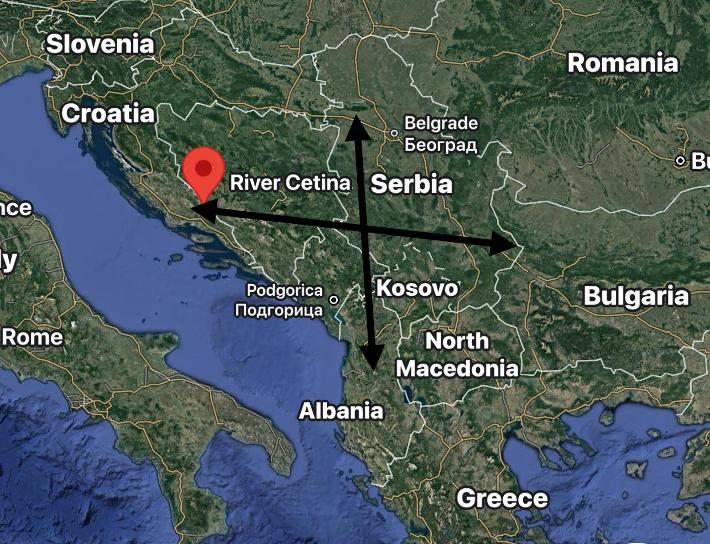
Copyright © 2024
